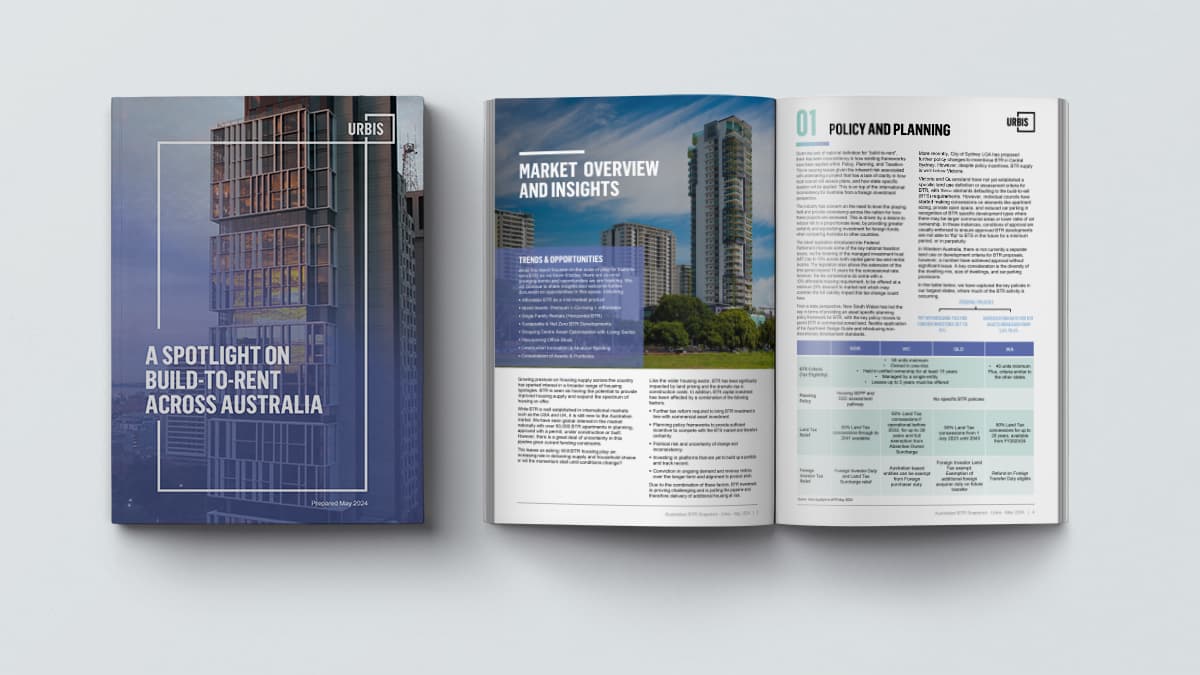How Australia's Build-to-Rent market is part of the housing solution

Amid growing pressures on housing supply, Australia’s build-to-rent (BTR) sector is trying to help.
With over 50,000 BTR apartments in various stages of development, this model, well-established in the USA and UK, is poised to diversify Australia’s housing market. However, several challenges threaten the sector’s growth and ability to ease some of the pressure, according to a recent report by Urbis.
Policy and planning frameworks
The Australian BTR sector faces significant policy and planning challenges due to the absence of a national BTR definition. This has led to inconsistent application of policy, planning, and taxation frameworks, introducing substantial risk and uncertainty for developers and investors. The latest legislation aims to address some taxation issues by lowering the managed investment trust (MIT) tax to 15%. New South Wales has led with specific planning policies, but other states like Victoria and Queensland lag behind, defaulting to build-to-sell (BTS) requirements which are not tailored for BTR projects.
While premium BTR assets thrive due to high rental demand and low vacancy rates, the overall investment landscape is challenging.
Market performance and investment challenges
The market’s performance is mixed. While premium BTR assets thrive due to high rental demand and low vacancy rates, the overall investment landscape is challenging. The sharp rise in land and construction costs, coupled with political and economic uncertainties, has made securing capital difficult. BTR investments require tax reforms, streamlined planning pathways, and a stable policy environment to become more attractive.
Trends and opportunities
Despite these challenges, several emerging trends offer potential growth avenues for the BTR sector:
- Affordable BTR: Catering to the mid-market segment.
- Mixed Assets: Combining premium, co-living, and affordable housing.
- Single Family Rentals: Horizontal BTR developments.
- Sustainable Developments: Focus on net-zero BTR projects.
- Asset Optimization: Integrating BTR with shopping centres
- Repurposing Office Stock: Transforming unused office spaces into BTR units.
- Construction Innovation: Utilising modular building techniques.
- Asset Consolidation: Building larger portfolios for better investment returns.
If we can get this right, the sector could contribute between 10-15 per cent of the new housing supply we need.
Current state and future prospects
Australia’s BTR sector is still embryonic, with significant potential for growth. However, achieving this potential requires addressing the current policy uncertainties and complexities, construction delivery difficulties, and encouraging stability in the funding environment. If we can get this right, the sector could contribute between 10-15 per cent of the new housing supply we need.
Action required
To realise the full potential of BTR, Urbis recommends several key actions, including:
- Tax Reforms: MIT 15 per cent tax rate obligation to deliver on complex requirements for eligibility, adjust GST treatment, and streamline stamp duty surcharges.
- Consistent Planning Pathways: Develop more nationally consistent design concessions for BTR and introduce further planning policy incentives to reduce project risks and attract investment.
Download the report
Take a deeper dive into the current state and future prospects of Australia’s BTR market, including detailed analysis and expert recommendations. Click here to download the full report.

















